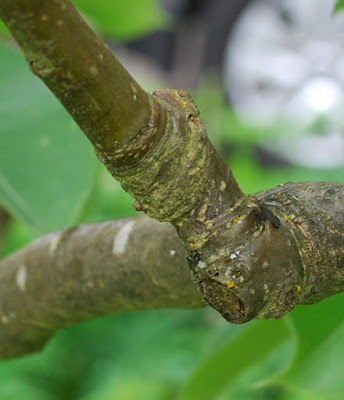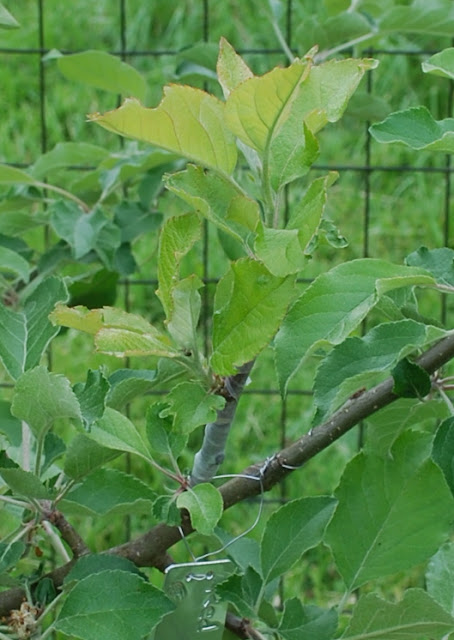 |
| Nijiseiki Asian Pear on Hosui Asian Pear. 4.29.16 |
All of the pear grafts took. I've red that pears are among the easiest trees to graft, and from my experience that is true. I thought the NoID Asian pear tree might me Nijiseiki, but from these grafts of that variety, I don't think so. The grafts have red coloration in the leaves and stems, not present on the NoID Asian Pear.
Two apples look tenuous. The first is from North Pole Columnar apple. Not sure, the entire tree looks sickly. Prior grafts from that variety took and grew quickly. The second is Hawkeye, reportedly the original "Red Delicious" before the "Red Delicious" was mutated into the brilliant deep red skin, tasteless apples of today.
 |
| Milo Gibson Apple on Winecrisp Apple. 4.29.16 |
The other apple grafts are growing nicely. They include all of the Fedco scion, even though those scion were small diameter: Milo Gibson, Sweet-16, Baldwin, Newtown Pippin, and Goldrush. The others from the Home Orchard Society scion exchange also took and look excellent: Arlie Red Flesh, and Dolgo Crab. The Nijiseiki was also from HOS.
The "Washington Red" Euro plum - I guess a NoID plum - scion from HOS is growing as well. I had doubts about that one.
 |
| NOID Euro Pear lon NOID Asian Pear, 2 years. 4.29.16 |
 |
| Sweet-16 Apple on Winecrisp Apple. 4.29.16 |
 |
| Arlie Red Flesh Apple on Rubenette Apple. 4.29.16 |
Grafts from prior years all look great. I've lost a few because the understock died. Not all cherry grafts took.
I think the ginkgo and cherry grafts that I did this year are not taking, they look small and might be dying.
 |
| Porter Historic Apple on Jonared at one year. 4.29.16 |